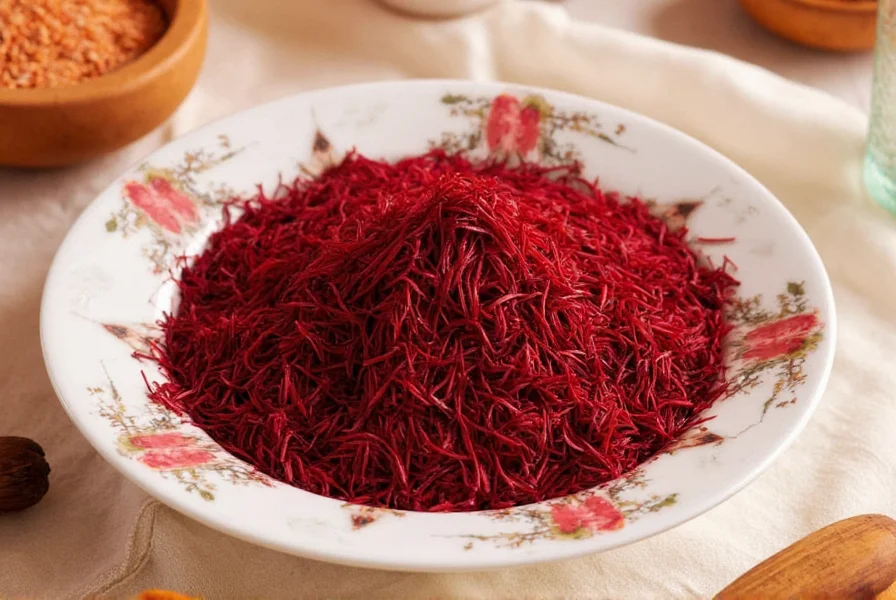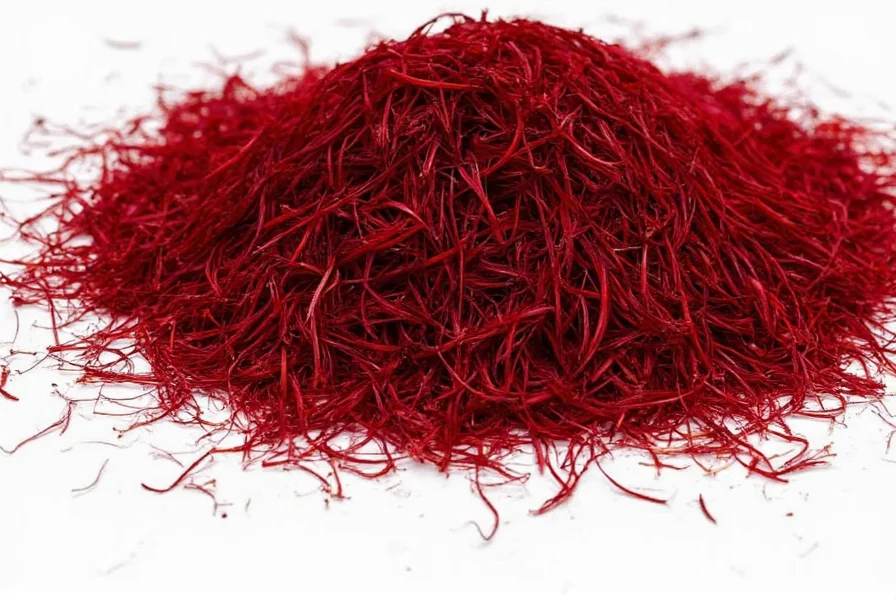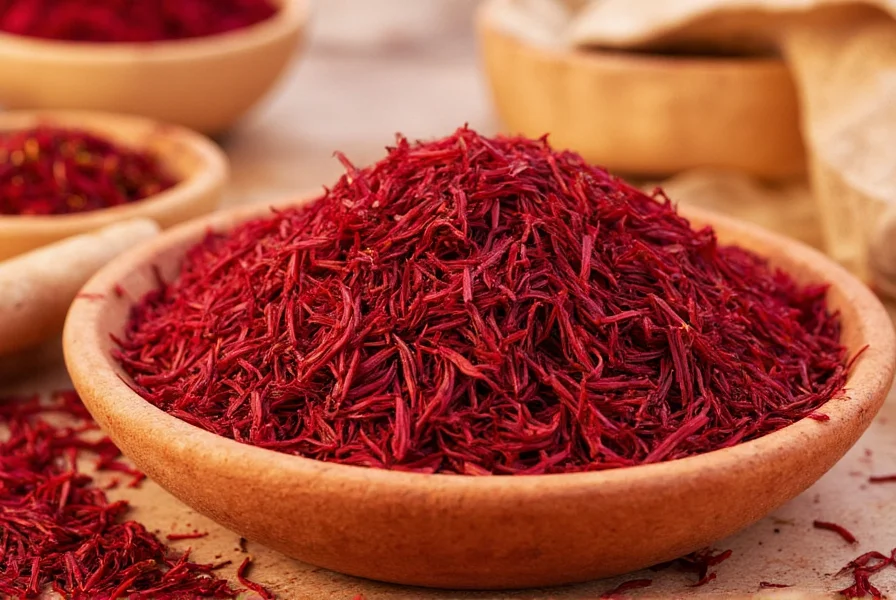High-quality saffron typically costs $5-$15 per gram ($2,200-$6,800 per pound) as of 2024. Mid-range saffron sells for $2-$5 per gram, while lower quality or potentially adulterated saffron may cost $1-$2 per gram. Prices vary significantly based on origin, grade, and purity.
Understanding saffron pricing requires more than just a number—it demands context about why this spice commands such premium rates. Saffron remains the world's most expensive spice by weight due to its incredibly labor-intensive harvesting process. Each crocus flower produces only three delicate stigmas, which must be hand-picked at dawn before the sun opens the blossoms. It takes approximately 75,000 flowers to yield just one pound of dried saffron threads.
When evaluating how much saffron costs, consumers must consider multiple factors that influence pricing. The ISO 3632 grading system provides the most reliable framework for assessing saffron quality through crocin (color), picrocrocin (taste), and safranal (aroma) measurements. Premium grade saffron (ISO Category I) contains higher concentrations of these compounds, directly impacting both price and culinary value.

Factors That Determine Saffron Pricing
Saffron's price isn't arbitrary—it reflects specific quality indicators and market conditions. Understanding these elements helps consumers determine whether they're getting fair value for their investment.
Quality Grading Standards
The ISO 3632 international standard categorizes saffron into three quality tiers based on laboratory measurements of key compounds:
| ISO Grade | Crocin (Color) | Picrocrocin (Taste) | Safranal (Aroma) | Typical Price per Gram |
|---|---|---|---|---|
| Category I (Premium) | ≥190 | ≥100 | 20-50 | $5-$15 |
| Category II (Mid-range) | 150-189 | 80-99 | 20-40 | $2-$5 |
| Category III (Commercial) | 80-149 | 50-79 | 15-35 | $1-$2 |
These measurements directly correlate with saffron's potency. Higher crocin levels mean more vibrant coloring power—just 0.1 grams can color 1 liter of liquid. Consumers seeking how much does saffron cost for cooking should note that premium grades actually provide better value despite higher upfront costs, as you need less quantity to achieve the same results.
Geographical Origin Impact
Where saffron is grown significantly affects its price and characteristics:
- Iranian Saffron (85% of global production): Most economical option, typically $2-$8 per gram for high-quality threads. Known for strong coloring power.
- Spanish Saffron (La Mancha region): Commands premium prices ($8-$15 per gram) due to strict quality controls and protected designation status.
- Kashmiri Saffron: Rare and highly prized for its deep color and flavor, often exceeding $15 per gram.
- Greek and Moroccan Saffron: Mid-range pricing ($4-$10 per gram), with Greek varieties noted for strong aroma.
When researching current saffron market price, remember that origin labels can be misleading. Some sellers market "Spanish-style" saffron that's actually Iranian product repackaged in Spain. Always look for specific region indications and ISO grading.
Form and Purity Considerations
Saffron appears in three primary forms, each with different pricing implications:
- Whole Threads (Stigmas): Most expensive form ($5-$15/gram) but retains freshness longest. Premium restaurants and serious home chefs prefer this form.
- Powdered Saffron: Typically 20-30% cheaper than threads ($4-$12/gram) but more susceptible to adulteration with fillers like turmeric or safflower.
- Saffron Stamens: Significantly cheaper ($1-$3/gram) but contains minimal active compounds—often misrepresented as genuine saffron.
Adulteration remains a significant issue in the saffron market. When evaluating how much should saffron cost, be wary of prices that seem too good to be true. Genuine high-quality saffron simply cannot be produced profitably below $2 per gram due to the immense labor required.

Current Market Pricing Guide
Understanding saffron pricing requires examining different purchase contexts. Here's what consumers should expect to pay for genuine saffron in 2024:
Retail Purchase Prices
When shopping for saffron at specialty stores or online retailers:
- 0.5-gram package: $3-$8 (equivalent to $6-$16 per gram)
- 1-gram package: $5-$15
- 5-gram package: $20-$60 (slight discount per gram)
- 1-ounce (28g) package: $120-$350
- 1-pound package: $2,200-$6,800
These how much is saffron per ounce figures represent genuine premium saffron. Be cautious of retailers offering 1-ounce packages for less than $100—that's a clear indicator of adulterated or extremely low-grade product.
Wholesale and Bulk Pricing
Commercial buyers can expect these approximate bulk rates:
- 100 grams: $400-$1,200
- 500 grams: $1,800-$5,000
- 1 kilogram: $3,500-$9,500
Reputable wholesalers provide ISO 3632 certification with bulk purchases. When investigating wholesale saffron price per kg, remember that prices below $3,000/kg typically indicate compromised quality.
How to Determine Fair Saffron Value
Price alone doesn't determine whether you're getting good value for saffron. Consider these evaluation methods:
The Water Test
Genuine saffron slowly releases a golden-yellow color when steeped in warm water (5-15 minutes). Fake saffron often dyes water immediately with an orange or red hue. Premium saffron maintains thread integrity throughout the process.
Smell and Taste Assessment
High-quality saffron has a distinctive hay-like aroma with subtle floral notes. When tasted (just one thread), it should have a slightly bitter initial taste that transforms into a complex floral-honey flavor. Avoid products with chemical or musty odors.
Pricing Red Flags
Watch for these warning signs when evaluating is this saffron price reasonable:
- Prices significantly below market rates (e.g., $1 per gram for "premium" saffron)
- Vague origin information ("imported saffron" without specific country)
- No mention of ISO grading or quality standards
- Excessive powder form without thread samples available
- Claims of "extra-strength" or "concentrated" saffron (marketing gimmicks)
Where to Find Quality Saffron at Fair Prices
Obtaining genuine saffron at reasonable prices requires knowing where to look:
- Specialty Spice Retailers: Companies specializing in spices often provide better quality control than general grocery stores. Look for businesses that publish ISO grading information.
- Certified Online Marketplaces: Some e-commerce platforms now feature verified saffron sellers with third-party quality testing.
- Direct Importers: Businesses that import directly from saffron-growing regions often offer better value by eliminating middlemen.
- Local Ethnic Markets: Persian, Spanish, or Indian markets frequently carry authentic saffron at more reasonable prices than mainstream retailers.
When researching where to buy saffron at good price, prioritize transparency over low cost. Reputable sellers will provide detailed information about origin, harvest date, and quality metrics rather than simply offering the lowest price.
Conclusion: Understanding Saffron's True Value
While the question how much is saffron seems simple, the answer requires understanding the complex factors behind saffron pricing. Premium saffron commands high prices because of its labor-intensive production process and limited growing regions. Rather than seeking the cheapest option, smart consumers evaluate saffron based on quality metrics and value per use.
Remember that a small amount of high-quality saffron delivers superior flavor, color, and aroma compared to larger quantities of inferior product. When properly stored in an airtight container away from light, premium saffron maintains its potency for up to two years, making the initial investment more reasonable over time.
How much does 1 gram of saffron cost?
High-quality saffron typically costs $5-$15 per gram. Mid-range saffron sells for $2-$5 per gram, while lower quality or potentially adulterated saffron may cost $1-$2 per gram. The price depends on ISO grading, origin, and purity.
Why is saffron so expensive compared to other spices?
Saffron is expensive because each crocus flower produces only three stigmas that must be hand-harvested at dawn. It takes approximately 75,000 flowers to yield one pound of dried saffron. The labor-intensive process, limited growing regions, and short harvest season all contribute to its high cost.
How can I tell if saffron is priced fairly?
Fairly priced saffron should have transparent origin information, ISO 3632 grading, and reasonable cost per gram. Premium saffron shouldn't cost less than $5 per gram, while prices above $15 per gram require exceptional quality justification. Be wary of prices that seem too good to be true—genuine saffron cannot be profitably produced below $2 per gram.
Does more expensive saffron provide better value?
Often yes. Higher quality saffron contains more crocin, picrocrocin, and safranal, meaning you need less quantity to achieve the same coloring, flavoring, and aromatic effects. While premium saffron costs more upfront, you typically use 30-50% less than lower grades, making it more cost-effective in the long run.
How much saffron do I need for cooking?
Most recipes require just 0.1-0.2 grams (about 15-25 threads) to flavor and color 4 servings. A single gram of saffron can season 5-10 dishes, making even premium saffron economical when used properly. Always crush threads and steep in warm liquid before adding to recipes for maximum extraction.











 浙公网安备
33010002000092号
浙公网安备
33010002000092号 浙B2-20120091-4
浙B2-20120091-4